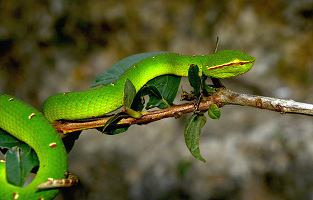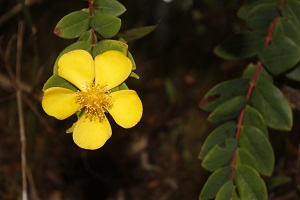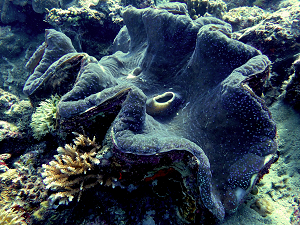 A YouTube series, Saribuhay, will feature the outputs of the Biodiversity S&T Program that is funded by the Philippine Council for Agriculture, Aquatic and Natural Resources Research and Development of the Department of Science and Technology (DOST-PCAARRD).
A YouTube series, Saribuhay, will feature the outputs of the Biodiversity S&T Program that is funded by the Philippine Council for Agriculture, Aquatic and Natural Resources Research and Development of the Department of Science and Technology (DOST-PCAARRD).
Saribuhay is a Filipino term for biodiversity.
The series, which will air in November, will tackle the accomplishments of the four sub-programs: terrestrial (flora and fauna) biodiversity, marine biodiversity, indigenous plants, and native animals biodiversity. The program, as a whole, aims to sustain and take care of the Philippines’ biodiversity through formulation of policies in the access and benefit-sharing of our genetic resources.
A preview of the Saribuhay series was shared during a press conference held on October 28, 2021 livestreamed over DOST-PCAARRD’s Facebook page.
“Our country is one of the 17 mega-diverse countries in the world. It is in our country where globally-important species of animals, plants, and microorganisms can be found,” said DOST Secretary Fortunato T. de la Peña. “Our country is also considered as the “center of marine biodiversity in the world.” However, for us to sustain this title, we need to know how to care for our biodiversity.”
 The Philippines is one of the countries that signed for the Convention of Biological Diversity, where the country was recognized for its continuing studies of new species of animals and plants as well as in implementing projects in achieving sustainability of the country’s biodiversity.
The Philippines is one of the countries that signed for the Convention of Biological Diversity, where the country was recognized for its continuing studies of new species of animals and plants as well as in implementing projects in achieving sustainability of the country’s biodiversity.
Prominent project accomplishments
Under the project, “Flora & Fauna Assessment Using Permanent Biodiversity System in Cebu Island Key Biodiversity Areas,” researchers examined the flora and fauna in Cebu Island Key Biodiversity Areas in Mt. Lantoy, Mt. Kapayas, and Nug-as Forest. Project accomplishments included discovery of new species of orchid in Mt. Lantoy; new species distribution records of Northern Temple Philippine Pit Viper and two endangered bird species, Cebu Black Shama and Cebu Hawk Owl; record of distribution of native tree species and record of unique behavior of fruit bats that eat roots and leaves instead of the usual fruits.
The said program is led by the Cebu Technological University (CTU) together with the University of the Philippines Cebu, Bohol Island State University, University of the Philippines Los Baños (UPLB), National Research Council of the Philippines, University of San Carlos, and Central Visayas Agriculture, Aquatic and Natural Resources R&D Consortium (CVAARRDEC).

From the Indigenous Plants and Native Animals Biodiversity S&T Program, the project, “Documentation of Indigenous Vegetables in the Philippines” led by UPLB documented indigenous vegetables from 20 provinces in the country and recorded 457 indigenous vegetables belonging to 255 genera and 90 families. Another project under this program, “Conservation, Improvement and Profitable Utilization of the Philippine Native Pigs,” developed six native pig breeds through organized community-based breeding and selection led by Marinduque State College, together with the Bureau of Animal Industry - National Swine and Poultry R&D Center, Isabela State University, Benguet State University, Kalinga State University, and Eastern Samar State University.
The six native pigs mentioned are Markaduke from Marinduque; Quezon black from Quezon province; ISUbela from Isabela province; Benguet from Benguet province; Yookah from Kalinga province, and Sinirangan from Eastern Samar. These native pig breeds boast of high-quality meat compared with commercial hybrid pig breeds.
Lastly, the Marine Biodiversity S&T Program oversees the ecological and ecosystem diversity management and conservation, assessment and monitoring, and sustainable use of our marine resources.
 The projects under the said program are the following:
The projects under the said program are the following:
● Exploration, Mapping and Assessment of Deep-Water Areas (Philippine Rise);
● Assessing the status of giant clams and advancing culture techniques;
● Studies on the Biology and Utilization of Commercially Important Mollusk Species in Panay Island in Western Visayas, Philippines (NICER for Mollusk Program);
● DNA Barcoding and Genetic Diversity of Selected Marine Fishes Along the North Bifurcation of the North Equatorial Current (NEC);
● DNA Barcoding of Selected Marine Fishes in Davao and Sulu Archipelago (MINDA);
● Stock Assessment and Reproductive Biology of Blue Swimming Crab (Portunus pelagicus Linnaeus, 1758) and other crustaceans in Maqueda Bay, Villareal Bay, Zumarraga Channel and Southeastern Samar Sea (NICER for Crustacean Program); and
● Central Visayas R&D Center for Biodiversity: Project 3. Biodiversity Conservation and Sustainable Utilization of Seagrasses in Camotes Islands, Cebu, Philippines (NICER Program).
These projects were led by UP Diliman, UP-Marine Science Institute, Davao del Norte State College, Western Philippines University, De La Salle University, UP Los Baños, UP-National Institute of Geological Science, UP Mindanao, UP Visayas, Samar State University, and University of San Carlos.
Accomplishments of the program included: discovery that 8 out of 11 species of giant clams in the world can be found in the Philippines; record of 75% to 100% of live corals in Benham Bank of Philippine Rise, and contribution of marine biological features and resources in Benham Bank Seamount that led to declaration of 50,000 hectares of the area as a Marine Protected Area and more than 300,000 hectares as Special Fisheries Management Area according to the Proclamation No. 489, Philippine Rise Marine Resource Reserve in 2018.
Moreover, 150 reef fish species were recorded in Northern Luzon and 373 reef fishes in Southern Mindanao. More than 304 reef fishes were also recorded in Basilan, Sulu, and Tawi-Tawi. Of this number 200 genetic barcodes were added to the biodiversity database of UP Mindanao.
In Panay Island, it was recorded that there is high mollusk diversity as well as the high production of cephalopod fishery. Under the program, a hatchery protocol was developed to address the low catch rate of blue swimming crab in Southeast Samar and Maqueda Bay.
An additional red alga and 11 species of seagrass were discovered in Camos Island.
The DOST-PCAARRD Biodiversity S&T Program was also selected as part of the “Big 21 in 2021,” which is a compilation of 21 outstanding outputs accomplished this year.
The Saribuhay series can be viewed in DOST-PCAARRD’s YouTube channel at https://youtube.com/dostpcaarrd.
